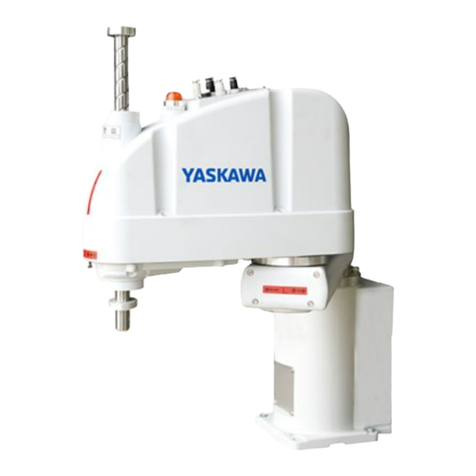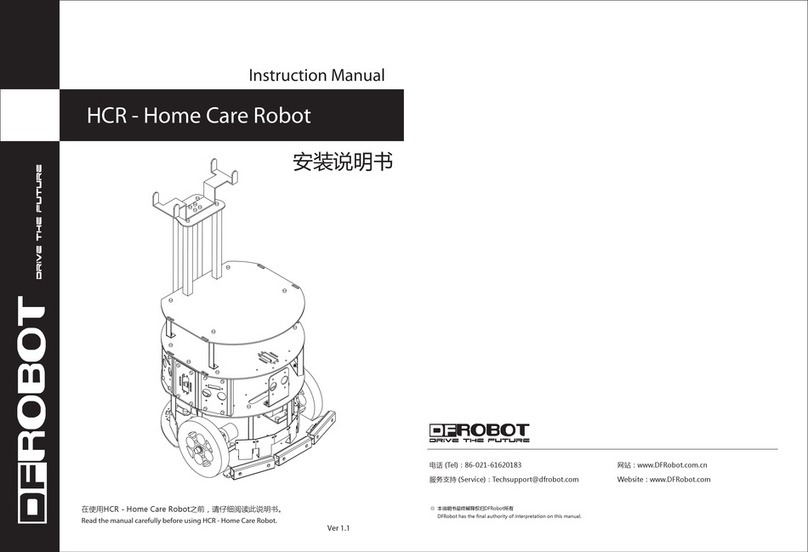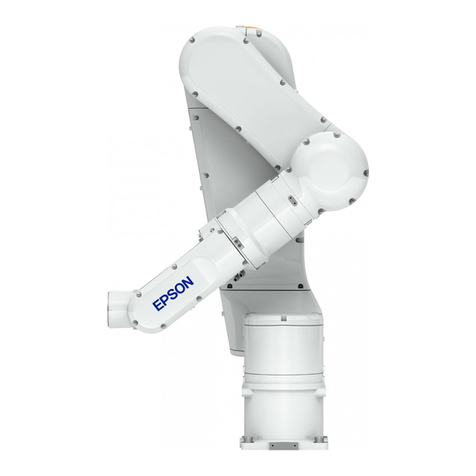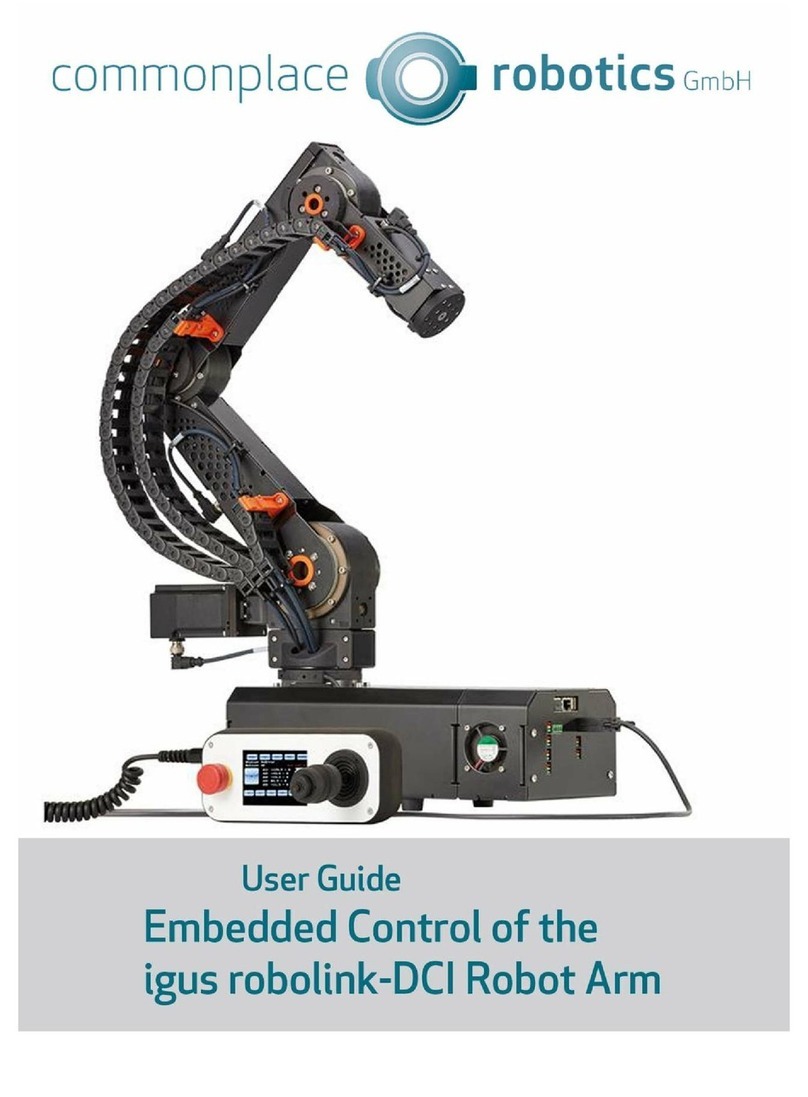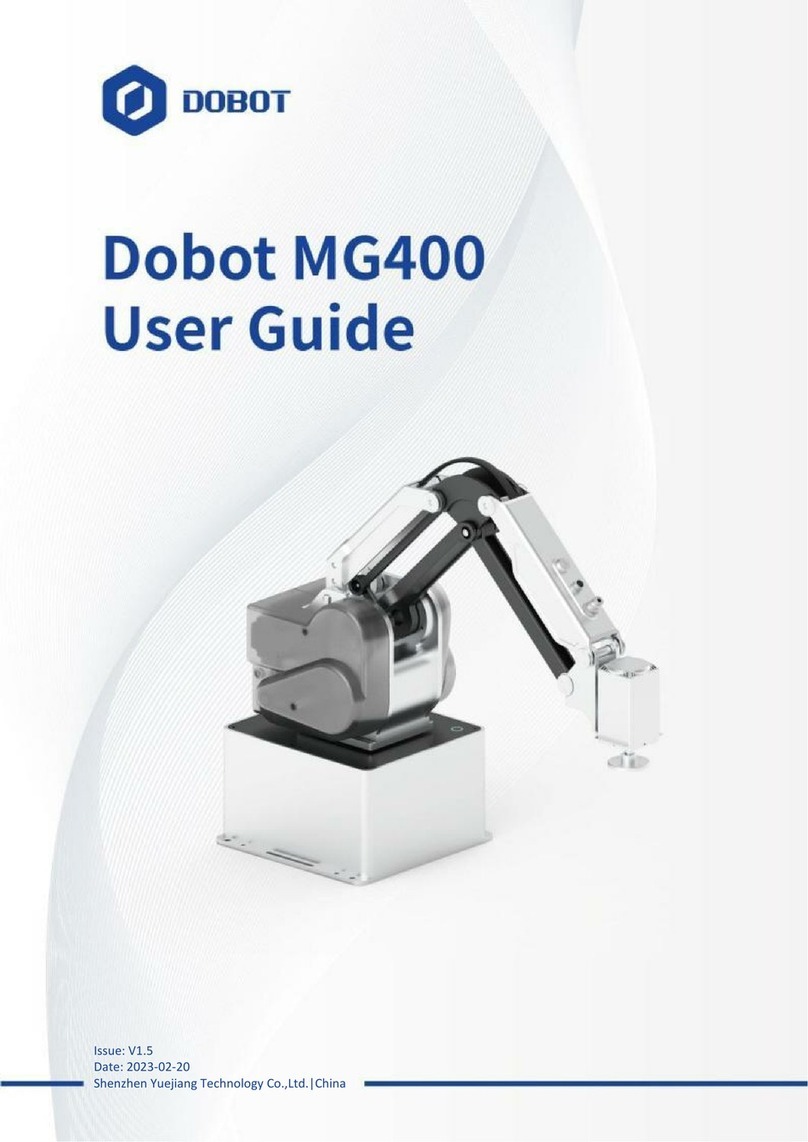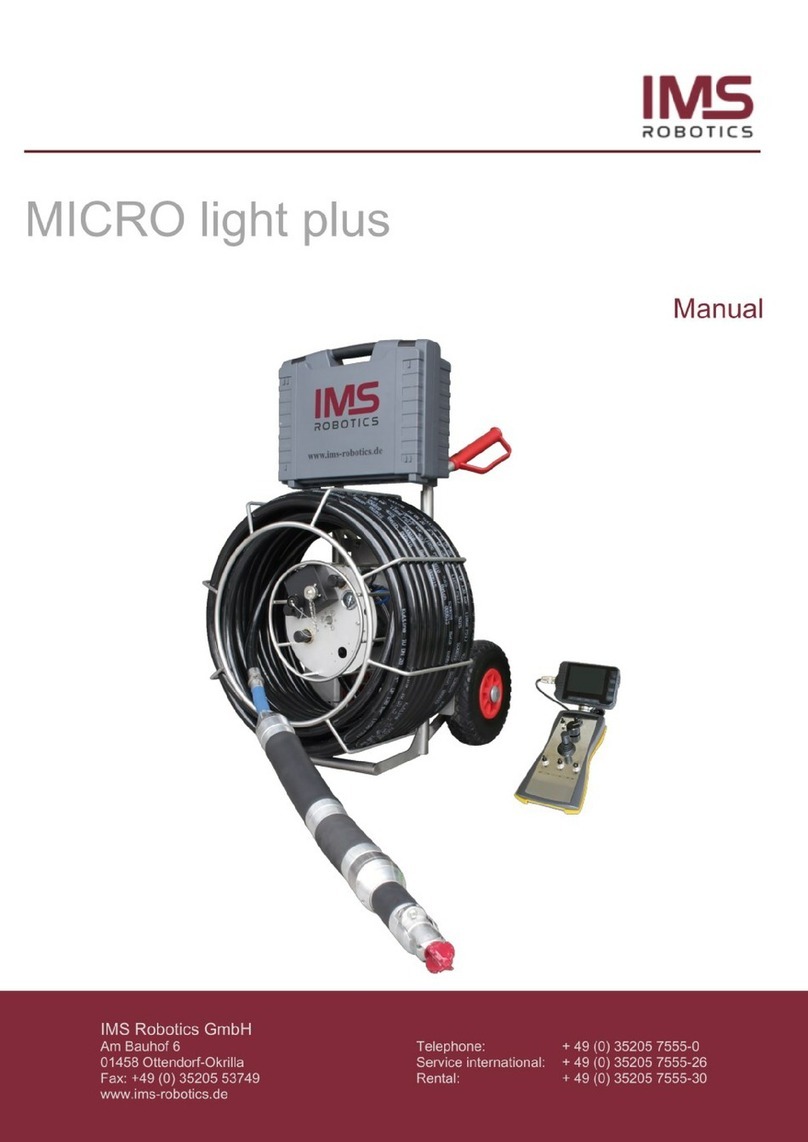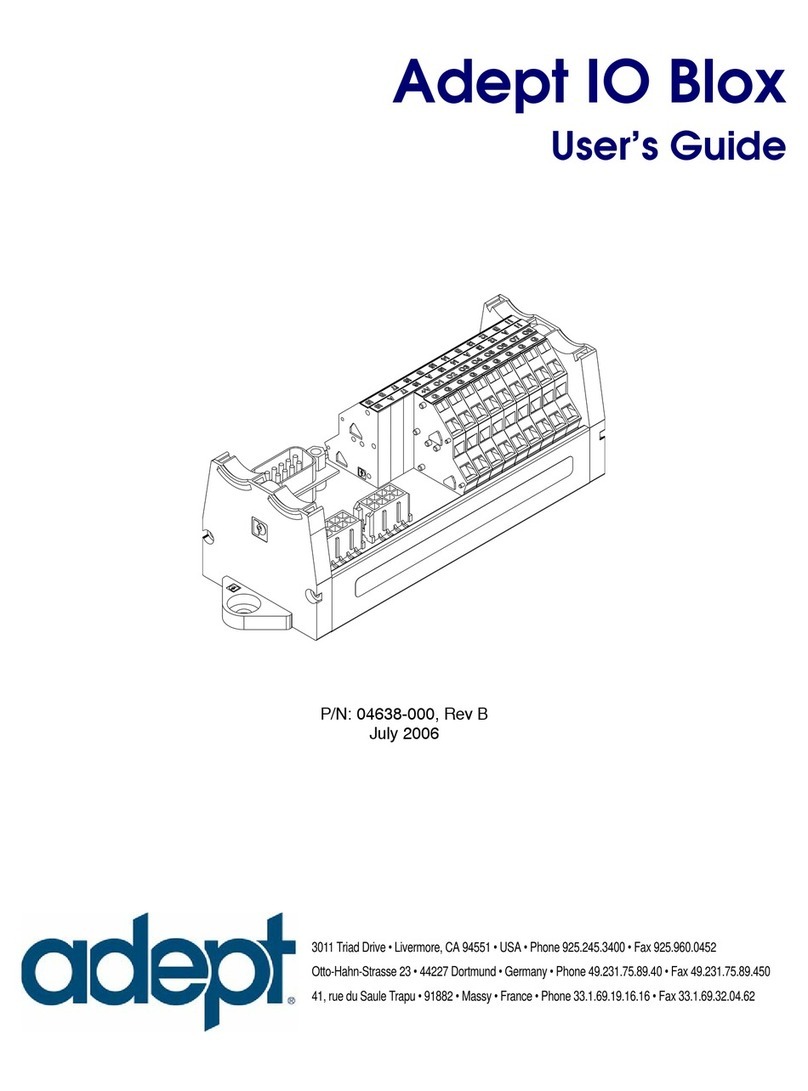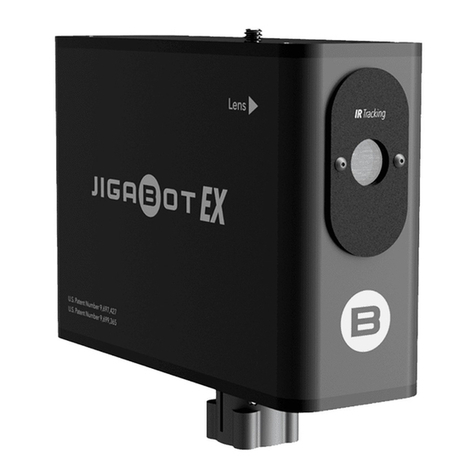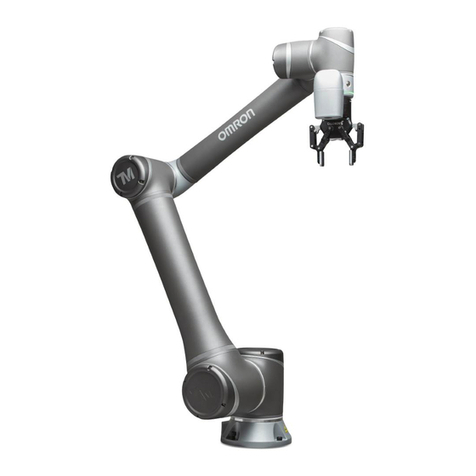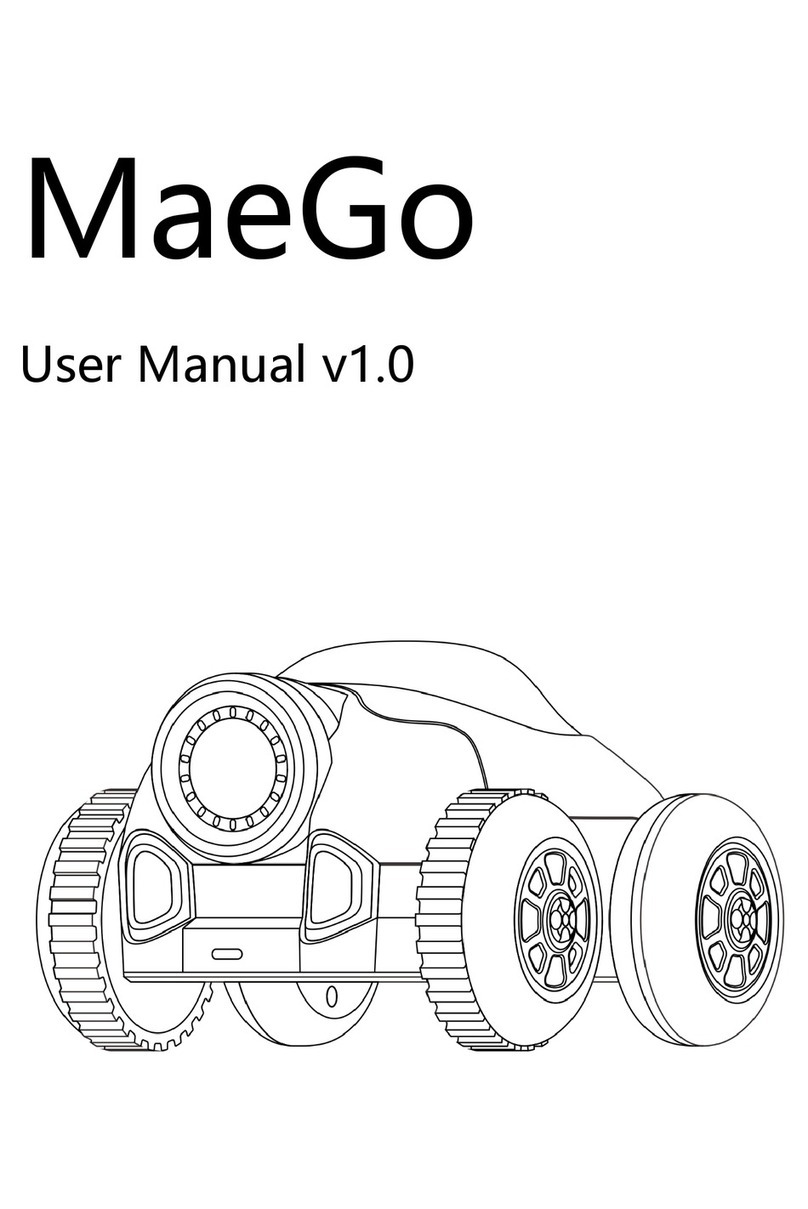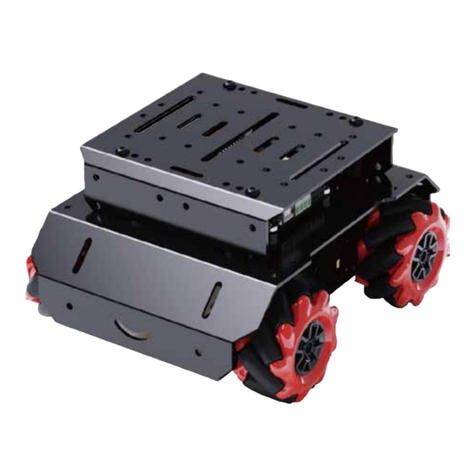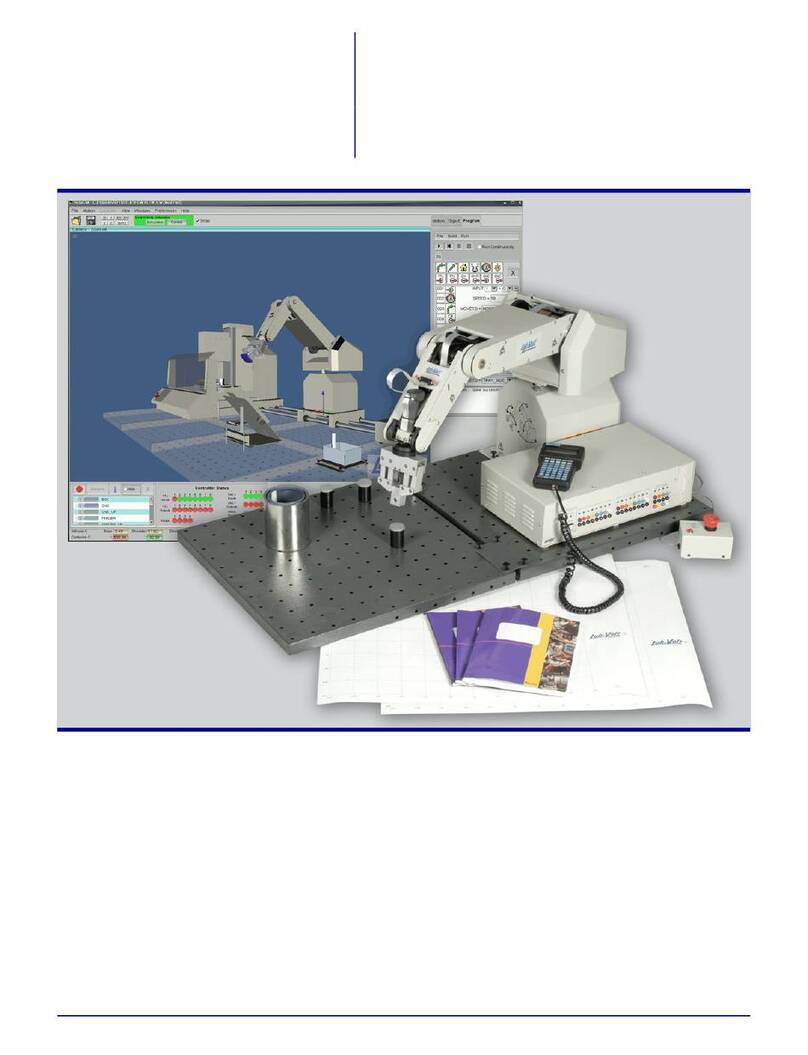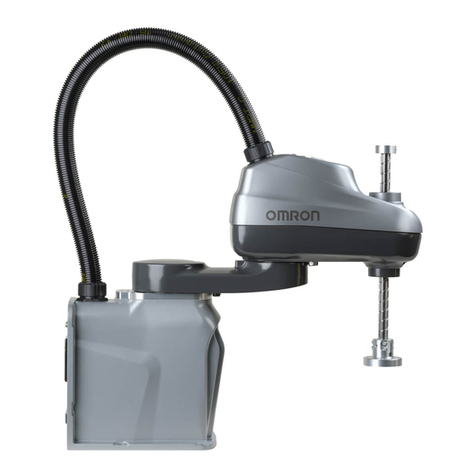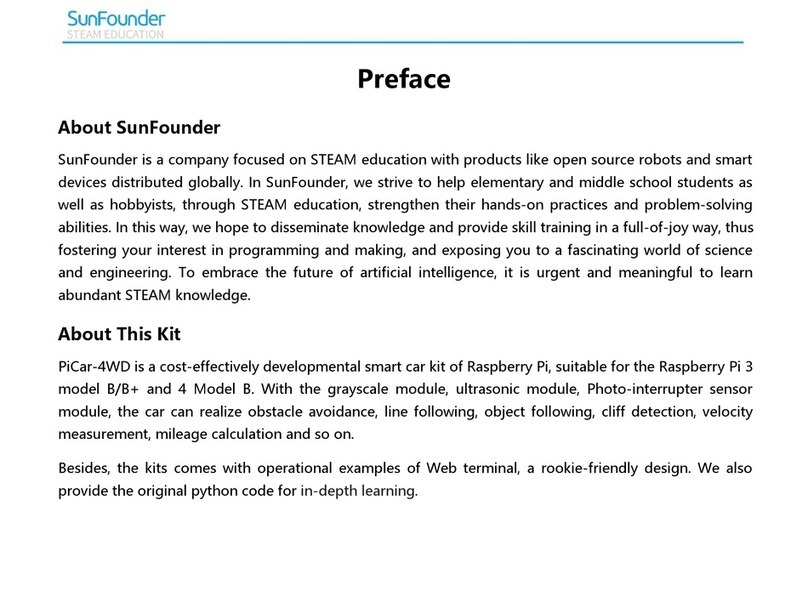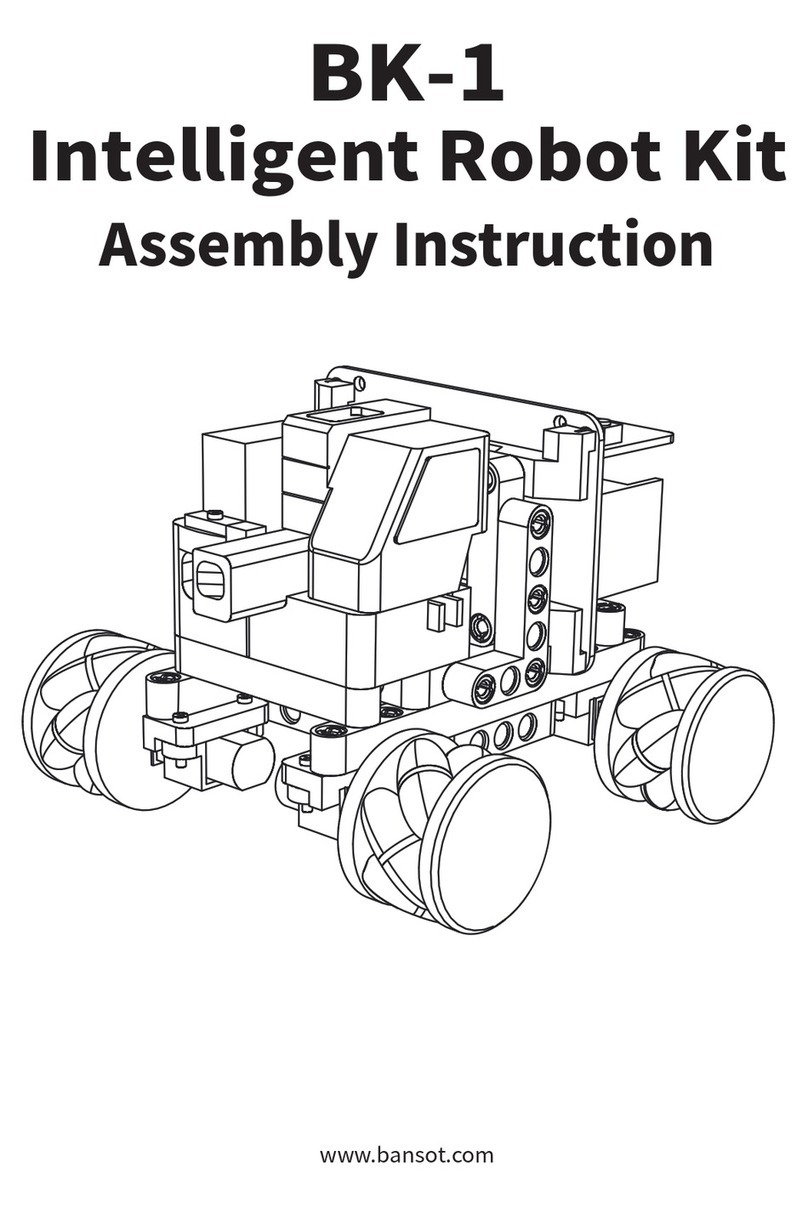RoboSpecies RobotriX Electronica User manual

C I R C U I T D E S I G N I N G
S O L D E R I N G
PROTOTYPING
Product by:
Complete robotic kits, parts and more...

www.roboshop.in | www.robospecies.com
ABOUT ROBOTRIX ELECTRONICA
RoboSpecies presents a world class engineering Robocs Kit which brings Science,
Technology, Engineering & Imaginaon together in a fun and challenging way.
RobotriX Electronica is a plaorm designed for kids of ages 10+.
With the help of RobotriX Electronica, children can not only learn various concepts of
Science and Technology but also develop Prototyping skills like Circuit Designing,
Soldering, innovave designs etc.
• RobotriX Electronica is a kit intended to introduce students to the excing world of
Prototyping & Circuit Designing.
• It is based on Stem Concept, i.e. Science, Technology, Engineering & Mathemacs
aer long research & development by highly experienced engineers.
• It is a complete and innovave plaorm to explore science.
• Best suited for creaon of Prototypes.

INDEX
www.robospecies.com
1. What’s in the Box.....................................................2
2. Basic Elecronics...................................................4-23
LED...............................................................................5
Resistor......................................................................6-8
Oha’s Law.....................................................................9
Capacitor....................................................................10
Transistor....................................................................11
Bread Board...............................................................12
DC Motor...................................................................13
DPDT Switch..............................................................14
Rainbow Wire & Power Supply..................................15
Integrated Circuits.....................................................16
IC Holder & Stac Precauon....................................17
555 Timer & LM 358..................................................18
L293D.........................................................................19
LM 7805 & Soldering Kit............................................20
Soldering Kit Descripon.......................................21-22
Soldering Tips.............................................................23
Soldering Steps...........................................................24
3. Tips & Tricks.......................................................26-27
4. Projects..............................................................28-58
Manual Roboc Car................................................28-31
1
Basic LED Glow Circuit...........................................32-33
LED Glow Using Push Buon..................................33-34
Fading an LED Using Potenometer ......................35-36
Darkness Acvaon System Using LDR..................36-37
Light Acvaon System Using LDR.........................38-39
Transistor as a NOT Gate........................................39-40
Transistor as a Touch Switch...................................41-42
Led Blinking Using 555 Timer..................................42-43
Designing IR Sensor on Breadboard.......................44-45
Designing Motor Driver on Breadboard.................46-47
Designing IR Sensor on Zero PCB...........................48-51
Designing Motor Driver on Zero PCB ....................52-56
Line Follower Robot...............................................57-58

What’s in the Box
2
1x Chassis
1x 7805
1x Desoldering
Wick
2 Meter
Rainbow wire
1x Bread
Board
2x Motor 1x 555IC 2x DPDT
Switch
25x F-F
Wire
5x LED
Green
1x L293D 1x Solder
Wire
1x Solder
Stand
1x Transistor 4x IR LED &
Photodiode
4x Green
Conector
20x 1K Ohm
Resistor
2x Wheel 1x Wire
Striper
1x Caster
Wheel
4x Single
Stand Wire
1xScrew
Driver
2xDC Jack 1x Buzzer
5x Nuts
& Bolts
1x LDR
5x LED
Yellow
5x LED
Blue
1x Manual
2x LM358
1x Flux
1x IC Base
16 Pin
5x Berg Strip
Male
10x LED
Red
1x Solder
Gloves
2x On/Off
Push Switch
2x Baery
Cap
2x IC Base
8 Pin
5x 150k Ohm
Resistor
5x 10K Ohm
Resistor
2x Zero
PCB
4x Pot
4x Push
Buon
1x Solder
Iron
2x DC Pin
with Baery Cap
www.roboshop.in | www.robospecies.com

This
Will
Make
You
S m a r t e r
“Gives you better tools to
think about the world and is
eminently practical for daily life.”
3

Basic Electronics
Concepts of Science
This Secon of RobotriX Kids covers a wide study of science including all the basic science Principles
like:
• LED
• Resistence
• OHM’s Law
• Capacitor
• Berg Strip
• Breadboard
• Circuit Designing
• Prototyping
• Soldering
4www.roboshop.in | www.robospecies.com

Basic Electronics
Light Emitting Diodes in short LED are diodes (electronic components
that let electricity pass in only one direction) that emit visible light when
electricity is applied, much like a light bulb. Early LEDs emitted low-
intensity red light, but modern versions are available across the
visible, ultraviolet, and infrared wavelengths, with very high brightness.
5
Light-emitting diodes are used in applications as diverse as
replacements for aviation lighting, automotive lighting (in particular
brake lamps, turn signals, and indicators) as well as in traffic signals.
LEDs have allowed new text, video displays, and sensors to be
developed, while their high switching rates are also useful in advanced
communications technology.
LED as you see is round or dome shaped from top with two legs coming
out at the bottom. One of the leg is longer than the other; it is because to
identify the anode and cathode terminal. As said before LED is a
form of diode thus will conduct electricity or glow only when it is
connected properly i.e. positive terminal or anode of LED is
connected to positive terminal of battery and negative terminal or
cathode of LED is connected to negative terminal of the battery.
LED orientation is given by Figure 1.
Infrared LEDs are also used in remote control units of many
commercial products including televisions, DVD players, and other
domestic appliances. LEDs come in different shapes and sizes, some
shapes of LEDs are given below:
Figure 1
LED
www.roboshop.in | www.robospecies.com

Basic Electronics
6
Resistors as the name suggests “resist” the electrical current going through them. You can think of resistors as “brakes” for
electrons. By controlling the electrons going through a resistor, you can make a circuit do different things.
The Figure shows a type of 4 band resistor. Resistors may be the primary building block of circuits, so you see
them quite a bit in electronics projects. Here are some of the things you can use them for:
ŸLimiting current to another component: Some parts, such as LEDs, eat up current. Like a kid eats candy bars they
try to gobble up as much as you give them. But LEDs run into a problem that they burn themselves out if they eat too
much current. You can use a resistor to limit the amount of current that reaches an LED.
ŸReducing voltage to part of the circuit: In many circuits, you may
need to provide different voltages to different parts of the circuit. You
can do this easily with the help of resistors. As shown in Figure 2
voltage gets divided across the resistors joined together. Assuming
that you have two identical resistors, that is, they apply their brakes in
the same amount, the voltage in between the two is exactly half that
of the rest of the circuit.
ŸControlling the voltage/current going into another component:
You can combine a resistor and a capacitor, for example, and you
create a kind of hourglass timer. Or put a resistor at the input of a
transistor to control how much the transistor amplifies a signal. Figure 2
Resistor
www.roboshop.in | www.robospecies.com

Basic Electronics
7
Series and Parallel Resistors
In a series configuration (Figure 3) the current through all of
the resistors is the same, but the voltage across each
resistor will be in proportion to its resistance. The potential
difference (voltage) seen across the network is the sum of
those voltages, thus the total resistance can be found as the
sum of those resistances.
Resistors in a parallel configuration (Figure 4) are each
subject to the same potential difference (voltage), however
the currents through them add. The conductances of the
resistors then add to determine the conductance of the
network. Thus the equivalent resistance (Req) of the
network can be computed.
Potenometer (Variable Resistor)
Potentiometer or Variable Resistor as the name suggest is a
type of resistor where you can vary the resistance by moving
the knob on top of it.
Variable resistor consist of a track with connections at both
ends and a wiper which moves along the track as you turn
the spindle.
Figure 3
Figure 4
The track may be made from carbon, cermet (ceramic and
metal mixtue) or a coil of wire (for low resistance). The track is
usually rotary but straight track version, usually called
sliders, are also available.
www.roboshop.in | www.robospecies.com

Basic Electronics
8
Resistor Color Coding
The value of a resistor is determined by the colored bands present on its surface. There are mainly 4-band and 5-band
resistors available in the market. In 4-band Resistors, 1st digit and 2nd digit are taken according to colors , 3rd digit acts as
a multiplier, whereas, the 4th digit tells about the tolerance as given in the table below:5f
Example: Let us consider a resistor having color bands as
follows:
Brown, Black, Red and Gold.
So, as shown in table, Brown stands for 1, Black stands for 0,
which gives us 10.
3rd band will act as multiplier, so 10 is multiplied with 10
raised to power 2, which finally gives us a value of 1000
Ohms and a tolerance of +/-5%.
This is how value of a resistor is calculated.
www.roboshop.in | www.robospecies.com

Basic Electronics
9
Ohm's law states that the voltage (V) across a resistor is proportional to the current (I), where the constant of
proportionality is the resistance (R).
Thus Voltage V is directly proportional to current I and constant of proportionality is given by R where V is measured in
units of volts, I is measured in units of amperes and R is measured in units of ohms.
To make it simpler just imagine 3 friends with the names VOLT, AMP and OHM , now AMP wants to go through a narrow
tunnel but can only do it if VOLT pushes him forward, so more will be the push of VOLT more of AMP will pass through the
tunnel. Now their 3rd friend OHM doesn‘t like AMP to go through the tunnel and so it tries to stop it from going
through. Hence more will be the value of OHM less of AMP pass through. Now consider when OHM applies a constant
pressure so now more will the force of VOLT more AMP will pass.
OHM’s Law
www.roboshop.in | www.robospecies.com

Basic Electronics
10
Capacitor
A Capacitor is a two-terminal electrical component used to store energy in an electric field. Basic unit of capacitance is the
farad (f). Figure A shows a type of ceramic capacitor and it can be connected either way, and Figure B shows electrolytic
capacitor which has a polarity, longer lead is connected to positive and shorter lead to negative.
Figure A Figure B
The calculation of Capacitance in Series or Parallel Connections
is just opposite as compared to that of a resistor.
When two or more capacitors are connected in Series, the
formula is given as follows: C1 C2
Whereas, the calculation of Capacitence when Capacitors are
connected in Parallel is given by: C1
C2
Series and Parallel Capacitance
1/C=1/C1+1/C2
C= C1+C2
www.roboshop.in | www.robospecies.com

Basic Electronics
11
Transistors
A Transistor can be used as an amplifier to control electric motor speed such as AC blower motors, or a solid state switch
to control actuators such as fuel injectors.
Figure A
Transistor Operaon
Transistors are made up of same N-Type and P-Type materials as diodes and employ the same principles. Transistors,
however, have two PN junctions instead of just one like in a Diode has. These two PN junctions allow the transistor to
perform more functions than a diode, such as acting as a switch or an amplifier. The transistor is also known as a BJT i.e.
Bipolar Junction Transistor and is made up to three parts:
P P N N NP
Collector Emitter
Base
Collector Emitter
Base
www.roboshop.in | www.robospecies.com

Basic Electronics
12
A Bread Board (Proto Board) is used as a construction base for prototyping of electronics. The term is commonly used to
refer to solderless breadboard (plugboard).
As can be seen in a Bread Board is an array of small holes all over. Basically it is divided into 4 sections. Top and Lower
sections are used for power supplies and middle 2 sections are used for building our desired circuit. See power section
as horizontal group of lines as inside they are joined like wise and middle section as vertical lines. As can be seen in
the figure. There usually a cut in between the power section lines so it can be connected by a jumper wire from left to
right.
Bread Board
VS POWER BAR
COLUMNS
OV POWER BAR
NO CONNECTION HERE
So on Bread Board there are 4 full length power lines, this means we can use 3 different power supplies or voltages and one
common ground. And as this power lines runs full length of board so u can take a wire from any small hole and give supply
wherever u need.
If needed more power supplies and different circuits can made, as we had put a jumper in between the two sections of one
power line. If we remove the jumper we can have 8 power lines and 7 different power supplies or voltages and one common
ground. But do check that the power supply line is also getting proper ground as without it the circuit won‘t be completed.
Now take the middle section as it consists of vertical lines so if any component needs to be connected it cannot be connected
to same holes of vertical lines as it will short that component, so you have to use holes of different vertical lines. Also remember
top 5 holes of one vertical line are connected together and bottom 5 holes of one vertical line are connected together and there
is no connection in between.
Inside view of Bread Board
www.roboshop.in | www.robospecies.com

13
Basic Electronics
Brushed DC Motors are the classic DC motors, which include a
split ring commutator, and can be powered by any kind of DC
battery. These motors are often considered to be limited, due
to the need that brushes will always be in contact with the
commutator ring, hence creating friction. Brushes also
scratch the surface of the ring, which eventually will lead to
replacement of the brushes and ring.
DC Motor
DC motors basically works on Fleming‘s left hand principle. It states that:
When a current carrying conductor is placed perpendicular to a magnetic
field then it experiences a tangential force perpendicular to the direction of
current and magnetic field. A left hand can be held, as shown in the
illustration, so as to represent three mutually orthogonal axes on the
thumb, first finger and middle finger. Each finger is then assigned to a
quantity (electric current, magnetic field and mechanical force).
Align first finger in the direction of magnetic field, the middle finger in the
direction of current flowing then the direction of force on it will be given by the
thumb.
Fleming’s Le Hand Rule
www.roboshop.in | www.robospecies.com

14
Basic Electronics
DPDT Switches
Double Throw (DPDT) Switches are used in manual
robotics. The use of DPDT switch is to just switch the
power supply from one direction to other. Means when
the switch is pressed forward it lets the current flow in one
direction and when it is pressed backward it lets the current
flow in other direction. So when we press the switch forward
our robotic car moves forward and when we press the
switch backward our robotic car moves backward.
As you look at a DPDT switch it will have 6 small metallic
terminals coming out at the bottom. In neutral position, the
plates have no connection. Now if a switch is pressed in up
direction, then internal metallic plates of that direction gets
connected by the middle terminal plates. Means middle
left terminal is connected by the middle terminal plates.
Means middle left terminal is connected to up left
terminal and middle right terminal is connected to up right
terminal or in the direction of pressed switch. Similarly
happens when the switch is pressed in other direction,
previous connection breaks and new connections are made
accordingly. You will get a more clear idea with the help of
following figures.
www.roboshop.in | www.robospecies.com

15
Basic Electronics
Rainbow cable is really helpful in situations where you need to make a lot of connections without a big mess of wires.
Nothing makes a project look more finished than a nice clean wiring harness.
Rainbow Wires
A power supply is a device that supplies electric power to an electrical load. Batteries or DC Adapters are used for power
supply. Regulated power supply is one which controls the output power in terms of voltage and current into a specific
value. Batteries and DC adapters are used to provide DC voltage and current.
Power Supply
www.roboshop.in | www.robospecies.com

16
Basic Electronics
An integrated circuit or monolithic integrated circuit (also referred to as IC, chip, or microchip) is an electronic circuit
manufactured by lithography, or the patterned diffusion of trace elements into the surface of a thin substrate of
semiconductor material.
Integrated circuits are used in virtually all electronic equipment today and have revolutionized the world of electronics.
Integrated Circuits
A power supply is a device that supplies electric power to an electrical load. Batteries or DC Adapters are used for power
supply. Regulated power supply is one which controls the output power in terms of voltage and current into a specific
value. Batteries and DC adapters are used to provide DC voltage and current.
The pins are numbered anti-clockwise around the IC (chip)
starting near the notch or dot. The diagram shows the
numbering for 8-pin and 16-pin ICs, but the principle is the
same for all sizes.
www.roboshop.in | www.robospecies.com

17
Basic Electronics
IC Holders
Ics (chips) are easily damaged by heat when soldering and their
short pins cannot be protected with a heat sink. Instead we use an IC
holder, strictly called a DIL socket (DIL = Dual In-Line), which can be safely
soldered onto the circuit board. The IC is pushed into the holder when all
soldering is complete.
IC holders are only used with pcb‘s where soldering is done, hence they
are not used on breadboards.
Many ICs are static sensitive and can be damaged when you touch
them because your body may have become charged with static electricity,
from your clothes for example. Static sensitive ICs will be supplied in
antistatic packaging with a warning label and they should be left in this
packaging until you are ready to use them.
Stac Precauons
www.roboshop.in | www.robospecies.com

18
Basic Electronics
Integrated Circuits (ICs)
The 8-pin 555 timer IC is used in many projects, a popular version is the NE555. Most circuits will just specify '555
timer IC' and the NE555 is suitable for these. The 555 output (pin 3) can sink and source up to 200mA. This is more
than most ICs and it is sufficient to supply LEDs, relay coils and low current lamps. To switch larger currents you
can connect a transistor.
The LM358 series consists of two independent high gain, internally frequency compensated operational amplifiers. It can
be operated from a single power supply and also split power supplies.
555 Timer
LM-358
www.roboshop.in | www.robospecies.com
Table of contents
